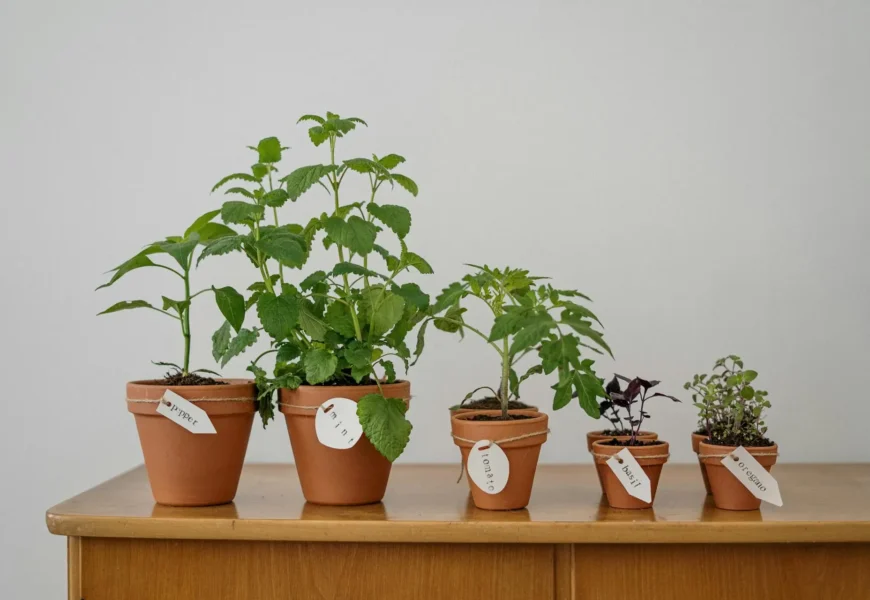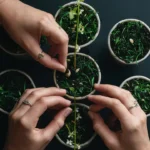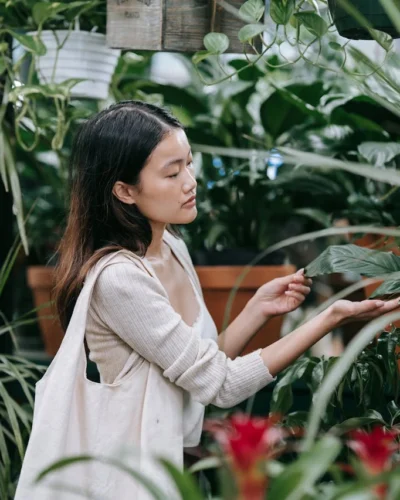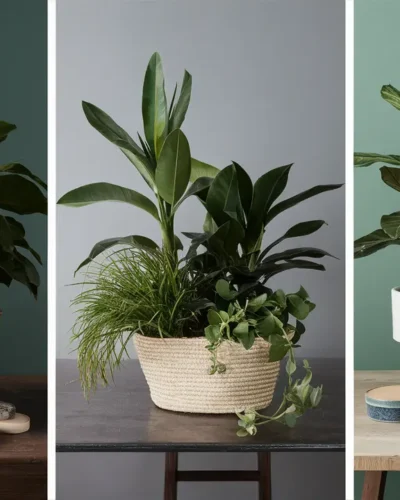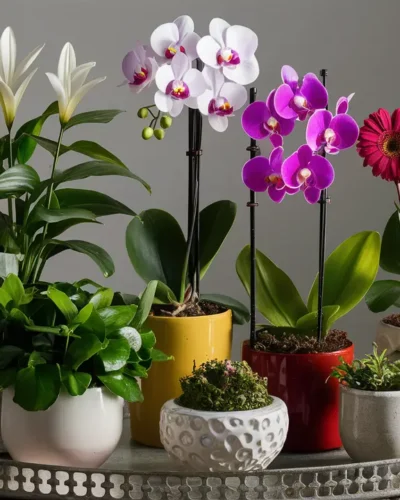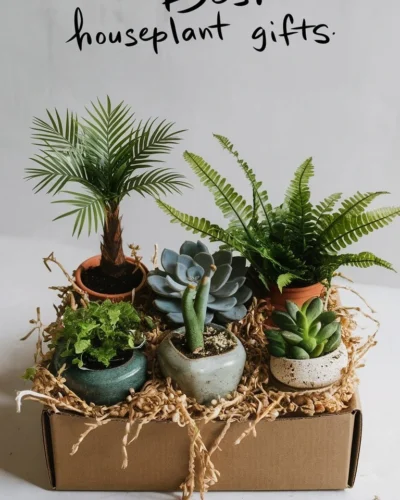Are you ready to embark on a rewarding journey of plant parenthood right from the seed? In this guide, we’ll explore the most rewarding houseplants to grow from seed, offering insights into their benefits, growing process, and more.
Growing houseplants from seed not only offers a sense of accomplishment but also allows you to witness the entire lifecycle of your green companions, right from their humble beginnings.
Table of Content
What Makes a Houseplant Rewarding to Grow from Seed?
Houseplants are well-loved for their capacity to enhance indoor environments, clean the air, and uplift our spirits and efficiency.
Yet, there is a special kind of magic in cultivating a plant from a small seed into a thriving beauty.
Not all houseplants are created equal when it comes to growing them from seed. Some are more forgiving for beginners, while others offer unique characteristics and benefits that make the growing process particularly rewarding.
Why Choose Seeds?
Seeds offer a unique opportunity to witness the miracle of life unfold right before your eyes. They are also more cost-effective compared to purchasing mature plants and provide access to a wider variety of species and cultivars.
Plus, growing plants from seed allows you to develop a deeper understanding of their growth requirements and habits.
Drawing from Experience
At Sproutfolk, we’ve delved into the world of gardening and houseplants extensively. From exploring the latest trends in houseplant care to sharing practical tips for creating thriving indoor gardens, our blog is a treasure trove of knowledge for plant enthusiasts of all levels. Here are some relevant posts to check out:
- Top 10 Houseplant Trends to Spruce Up Your Home in 2024
- Breathe Easy: Beautify Your Living Room – Top Plants for a Healthy, Happy Home
- From Seedling to Steeping: Cultivate Your Own Indoor Tea Garden for Fresh Brews
- Morning Magic: The Best Time to Water Your Indoor Plants
Criteria for Selecting Rewarding Houseplants to Grow from Seed
When choosing houseplants to grow from seed, it’s essential to consider several factors to ensure a successful and satisfying gardening experience. Here are some criteria to keep in mind:
1. Ease of Germination and Growth
- Opt for seeds that have a high germination rate and are relatively easy to grow, especially if you’re a beginner.
- Look for plants that thrive in indoor environments and are adaptable to different light and humidity levels.
- Consider the time it takes for the seeds to germinate and mature into healthy plants, especially if you’re eager to see results.
2. Visual Appeal and Aesthetic Value
- Choose houseplants with attractive foliage, flowers, or unique features that will enhance the beauty of your indoor space.
- Consider the size and growth habit of the plants, ensuring they fit well within your available space and complement your existing decor.
- Explore a variety of colors, textures, and shapes to create visual interest and diversity in your indoor garden.
3. Practical Benefits
- Select houseplants that offer practical benefits beyond aesthetics, such as air purification, aromatherapy, or edible harvests.
- Explore plants known for their air-purifying qualities, such as spider plants, pothos, or peace lilies, to improve indoor air quality.
- Consider growing herbs or edible plants from seed to enjoy fresh flavors and ingredients in your cooking, adding both functionality and beauty to your home.
Relevant Internal Links:
- Learn more about air-purifying plants for a healthier indoor environment.
- Explore vertical gardening techniques to maximize space efficiency in your indoor garden.
- Discover the joys of growing herbs indoors for fresh and flavorful culinary creations.
- Find out about the best time to water your indoor plants for optimal growth and health.
By considering these criteria, you can select houseplants that not only thrive from seed but also enrich your indoor environment and bring joy and satisfaction as they grow and flourish.
In the next section, we’ll explore some of the top houseplants that meet these criteria, offering insights into their characteristics and growing requirements.
Top Houseplants to Grow from Seed
Now that we’ve outlined the criteria for selecting rewarding houseplants to grow from seed, let’s delve into some top contenders that meet these criteria.
From easy-to-grow varieties to visually stunning specimens, these houseplants promise to bring beauty, functionality, and joy into your indoor space.
1. Spider Plant
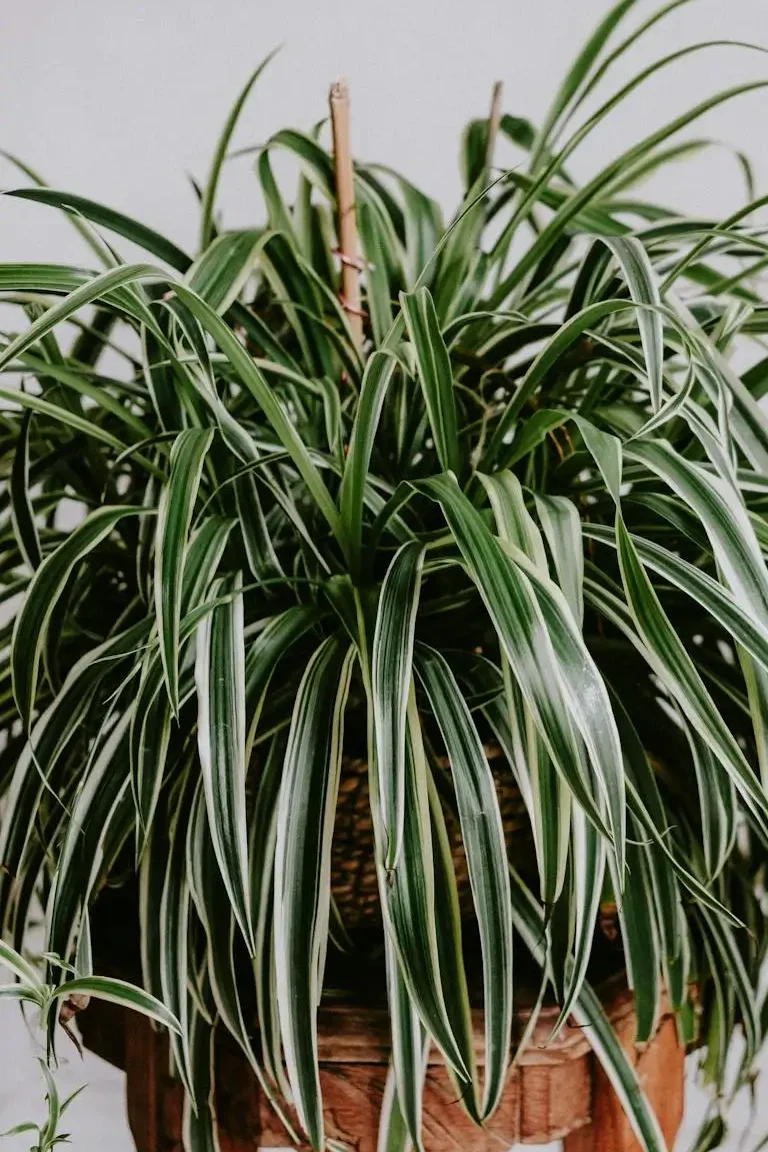
- Ease of Growing: Spider plants are incredibly forgiving and adaptable, making them perfect for beginners.
- Visual Appeal: Known for their arching foliage and spider-like plantlets that dangle from long stems, spider plants add a touch of elegance to any room.
- Practical Benefits: These plants are excellent air purifiers, removing toxins like formaldehyde and xylene from indoor air.
Learn more about the benefits of air-purifying plants here.
2. Basil (Ocimum basilicum)
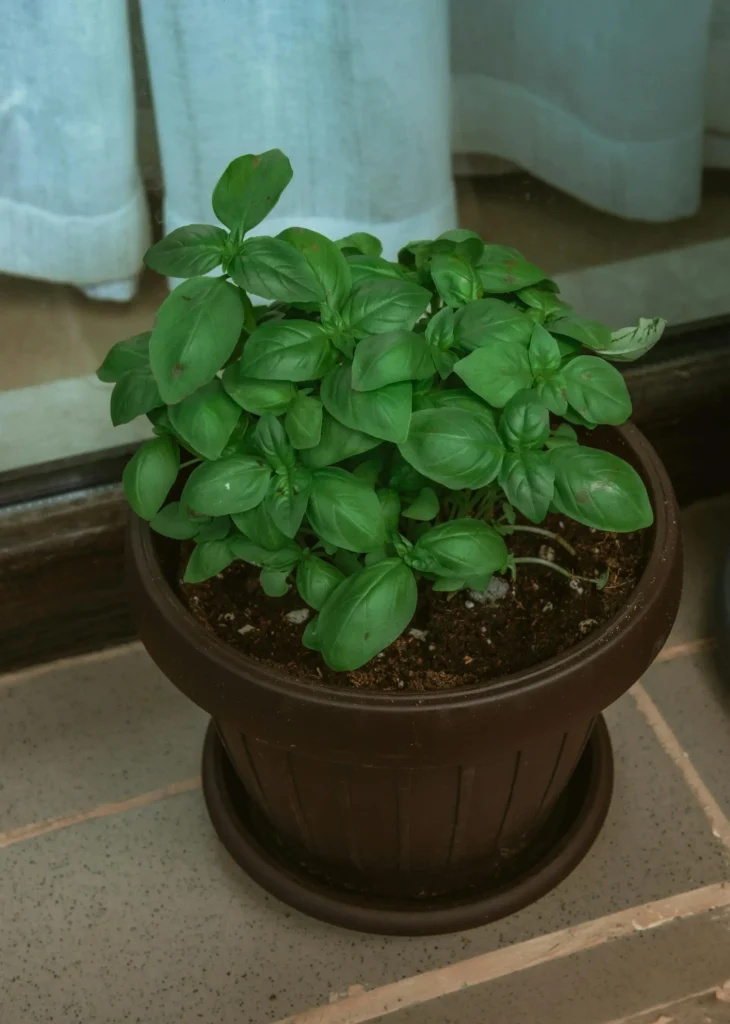
- Ease of Growing: Basil seeds germinate quickly and thrive in warm, sunny conditions, making them ideal for indoor cultivation.
- Visual Appeal: With its fragrant leaves and vibrant green foliage, basil adds both beauty and flavor to your indoor garden.
- Practical Benefits: Fresh basil leaves are a staple in many culinary dishes, providing a convenient and flavorful addition to your meals.
Explore the joys of growing herbs indoors and cultivating your own indoor tea garden here.
3. Peace Lily (Spathiphyllum spp.)

- Ease of Growing: Peace lilies are low-maintenance plants that thrive in low to moderate light conditions, making them perfect for indoor environments.
- Visual Appeal: With their glossy, dark green leaves and elegant white flowers, peace lilies add a touch of serenity and beauty to any space.
- Practical Benefits: These plants are renowned for their air-purifying qualities, removing harmful toxins like ammonia and benzene from indoor air.
Discover more about the benefits of peace lilies and other air-purifying plants here.
4. Sunflowers (Helianthus annuus)
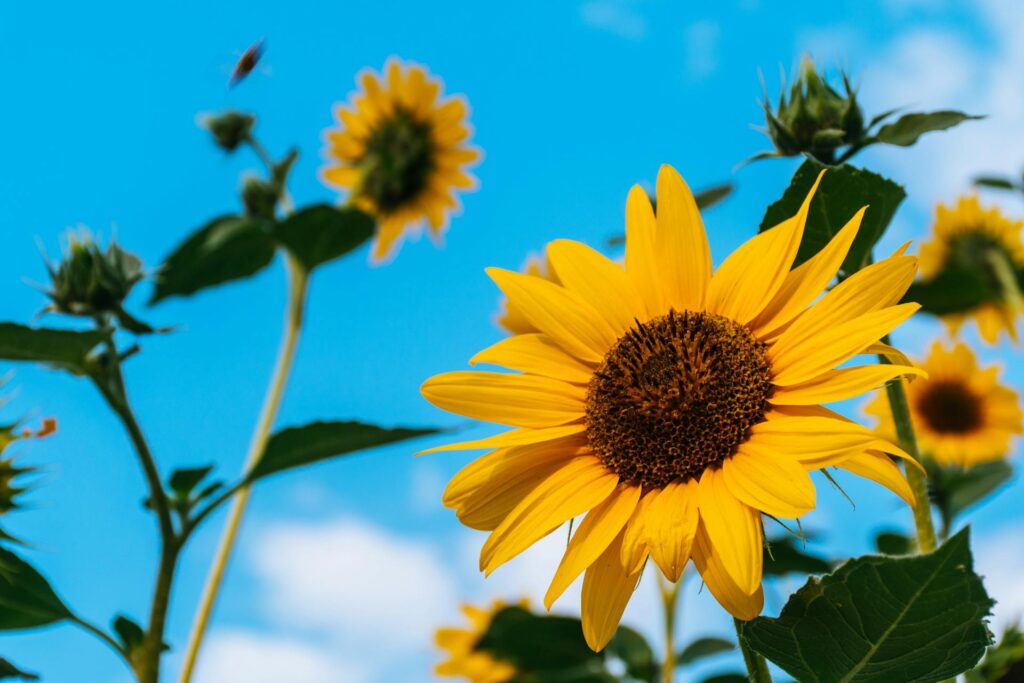
- Ease of Growing: Sunflowers are a joy to grow from seed, requiring only well-drained soil, ample sunlight, and regular watering.
- Visual Appeal: With their large, cheerful blooms that follow the sun’s path, sunflowers bring warmth and radiance to any indoor space.
- Practical Benefits: Sunflowers not only beautify your home but also provide edible seeds that can be enjoyed as a nutritious snack or used in cooking and baking.
Learn more about creating a beautiful indoor garden with self-watering planters here.
By choosing these rewarding houseplants to grow from seed, you can experience the joy of nurturing life from its very beginning and enjoy the benefits they bring to your indoor environment. Whether you’re a seasoned gardener or a novice enthusiast, these plants are sure to delight and inspire as they thrive and flourish in your home.
Step-by-Step Guide to Growing Houseplants from Seed
Now that we’ve explored some top houseplants to grow from seed, let’s dive into the exciting process of nurturing these seeds into thriving plants. Follow this step-by-step guide to ensure success in your seed-growing journey:
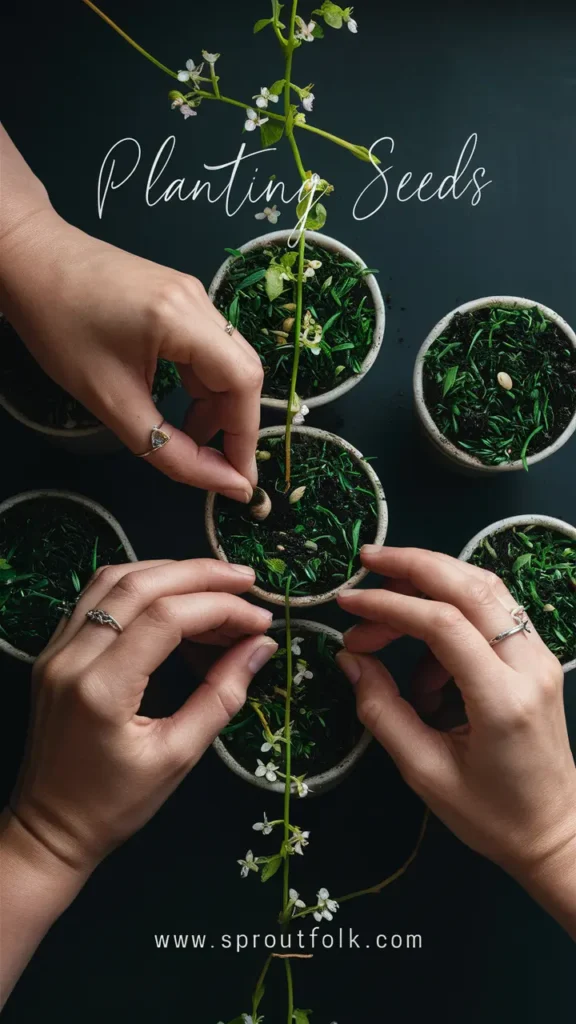
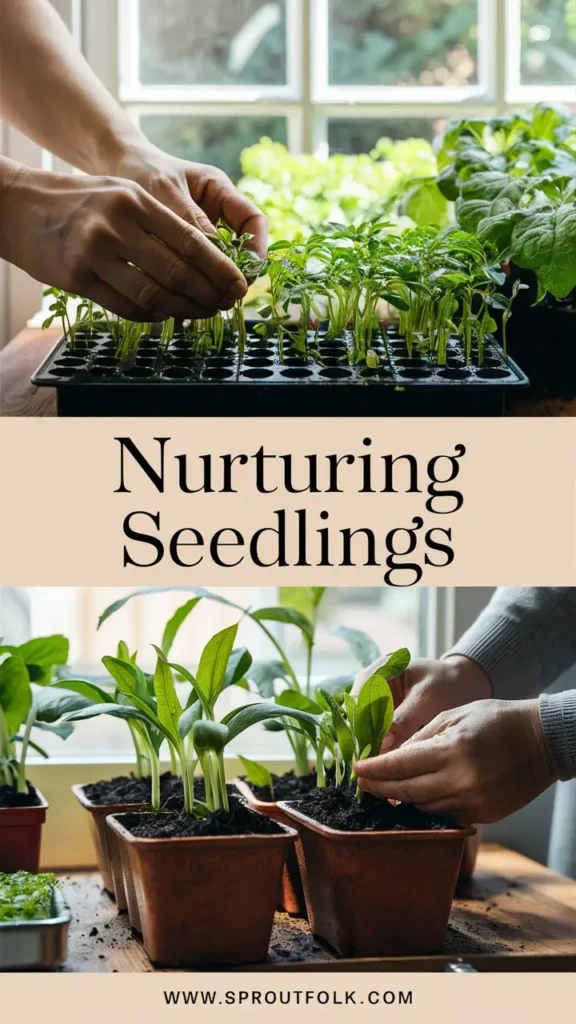
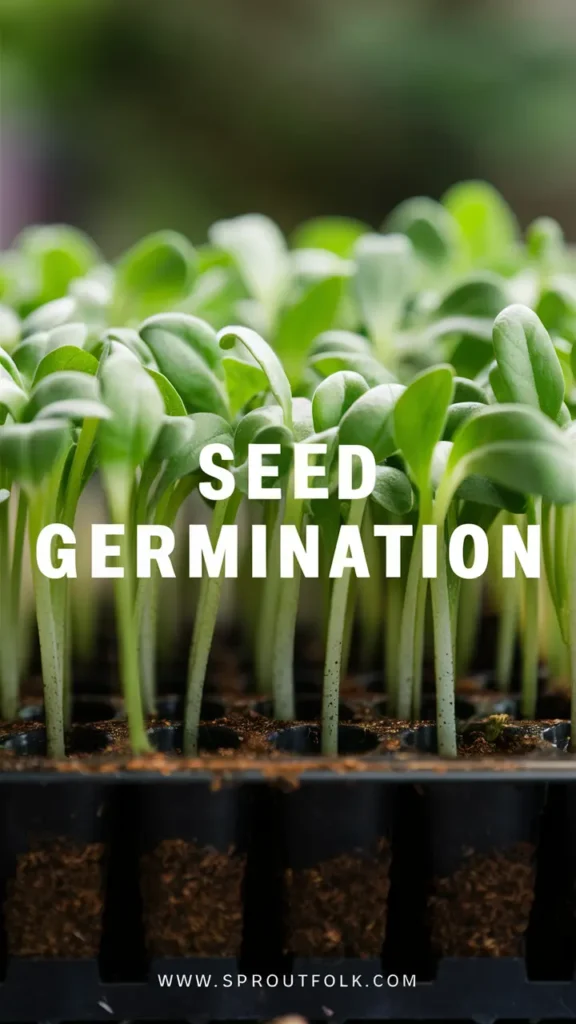
1. Preparing the Seeds and Soil
- Select High-Quality Seeds: Choose seeds from reputable sources, ensuring they are fresh and viable for optimal germination.
- Choose the Right Soil: Use a well-draining potting mix specifically formulated for seed starting to provide the ideal growing environment.
- Seed Starting Containers: Select containers with drainage holes to prevent waterlogged soil and promote healthy root development.
- Moisture and Temperature: Keep the soil consistently moist but not waterlogged, and maintain a consistent temperature conducive to seed germination.
2. Planting and Germination Process
- Sow Seeds at the Correct Depth: Follow the instructions on the seed packet for the appropriate planting depth, usually shallow for small seeds and deeper for larger ones.
- Provide Adequate Light: Place the seed trays or pots in a bright location with indirect sunlight or under grow lights to promote healthy seedling growth.
- Monitor Moisture Levels: Check the soil regularly and water gently as needed to keep it evenly moist, avoiding both dryness and waterlogging.
- Be Patient: Germination times vary depending on the plant species and environmental conditions, so be patient and consistent in your care routine.
3. Care and Maintenance Tips
- Thinning Seedlings: Once the seedlings have emerged and developed their first true leaves, thin them out to provide adequate space for growth, ensuring stronger, healthier plants.
- Fertilization: Once the seedlings have established themselves, begin feeding them with a diluted, balanced fertilizer to support healthy growth.
- Transplanting: When the seedlings have outgrown their seed trays or pots, transplant them into larger containers with well-draining soil, providing ample space for root development.
- Regular Maintenance: Continue to monitor the plants for signs of pests, diseases, or nutrient deficiencies, and address any issues promptly to ensure optimal growth and health.
By following these steps and incorporating best practices for seed starting and plant care, you can enjoy the rewarding experience of growing houseplants from seed.
With patience, dedication, and a little green thumb know-how, you’ll soon be surrounded by flourishing greenery that brings joy and beauty to your indoor space.
Troubleshooting Common Challenges
While growing houseplants from seed can be a rewarding experience, it’s not without its challenges. From seed viability issues to pests and diseases, various obstacles may arise along the way.
Here’s how to troubleshoot common challenges and ensure the success of your seed-growing endeavors:
1. Seed Viability Issues
- Check Seed Quality: If seeds fail to germinate, assess their viability by conducting a germination test using a damp paper towel or seedling tray.
- Ensure Proper Storage: Store seeds in a cool, dry place away from direct sunlight and moisture to maintain their viability.
- Consider Seed Age: Some seeds have a limited viability period and may lose their ability to germinate over time, so it’s essential to use fresh seeds whenever possible.
2. Pest and Disease Management
- Monitor for Signs of Pests: Keep an eye out for common pests such as aphids, spider mites, and fungus gnats, and take action promptly if detected.
- Natural Remedies: Utilize natural pest control methods such as insecticidal soap, neem oil, or introducing beneficial insects to combat pest infestations.
- Preventive Measures: Practice good sanitation and hygiene practices to minimize the risk of pest and disease outbreaks, such as regularly cleaning pots and trays and avoiding overwatering.
3. Environmental Factors Affecting Growth
- Optimize Light Levels: Ensure that your seedlings receive adequate light for healthy growth, adjusting the placement of grow lights or trays as needed to provide optimal light exposure.
- Maintain Humidity Levels: Seedlings are sensitive to fluctuations in humidity, so use a humidity dome or misting spray to maintain consistent moisture levels around the plants.
- Monitor Temperature: Keep an eye on temperature fluctuations, ensuring that seedlings are kept in a stable, moderate temperature range conducive to growth.
Related posts:
- Explore natural remedies for pest control in your indoor garden here.
- Learn about the importance of maintaining humidity levels for seedling growth here.
- Find out how to prevent overwatering and its detrimental effects on plant health here.
- Discover the role of temperature in indoor plant growth and how to optimize it for success here.
By addressing these common challenges and implementing proactive measures to mitigate them, you can overcome obstacles and ensure the health and vitality of your seed-grown houseplants. With patience, perseverance, and a willingness to learn, you’ll be rewarded with a thriving indoor garden that brings joy and beauty to your home.
Conclusion
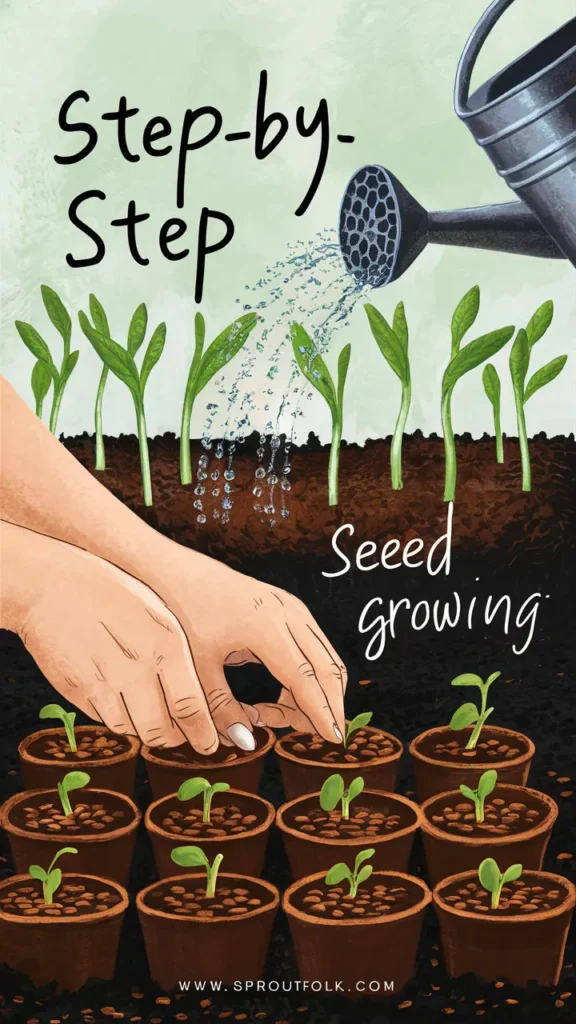
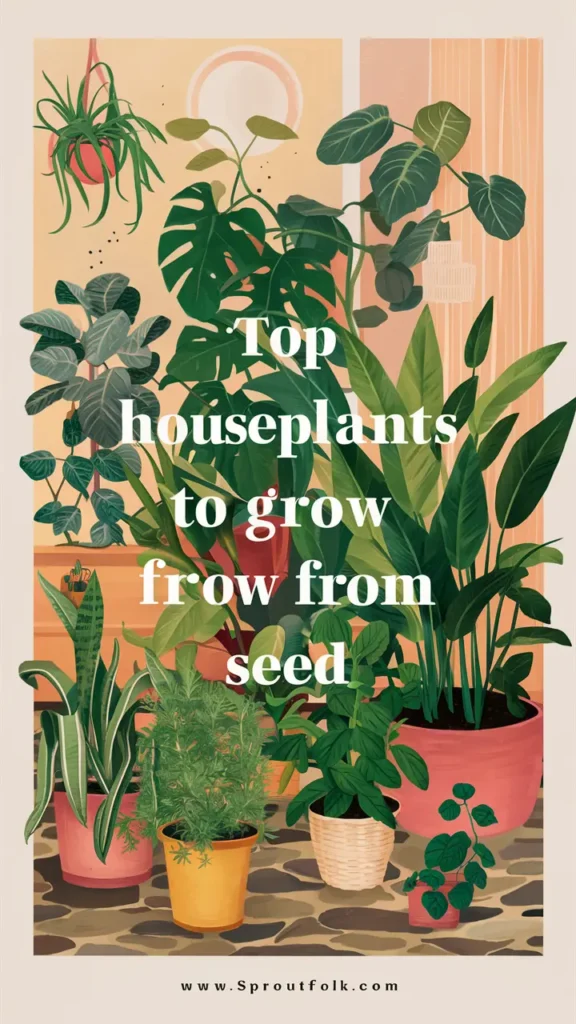
As we conclude our exploration of growing houseplants from seed, it’s clear that this journey offers a wealth of rewards, challenges, and opportunities for growth. From the thrill of seeing tiny seeds sprout to the satisfaction of nurturing healthy plants, the process of seed starting is both fulfilling and enriching.
Recap of the Benefits
- Cost-effectiveness: Growing houseplants from seed is a budget-friendly way to expand your indoor garden and explore a wide variety of plant species.
- Personal Satisfaction: There’s a special sense of accomplishment that comes from nurturing plants from seed and witnessing their growth and development over time.
- Diversity and Unique Varieties: By growing plants from seed, you have access to a vast array of species and cultivars, allowing you to create a diverse and unique indoor garden.
Encouragement and Inspiration
As you embark on your own seed-growing journey, we hope you feel empowered and inspired to cultivate your own indoor oasis of greenery. Whether you’re a beginner gardener or a seasoned enthusiast, there’s always something new to learn and discover in the world of indoor gardening.
Explore other posts:
- Explore our top 10 houseplant trends for inspiration on the latest in indoor plant decor.
- Dive deeper into the world of vertical gardening to maximize space efficiency in your indoor garden.
- Learn about the benefits of creating an indoor tea garden for fresh and flavorful brews right at home.
- Discover how self-watering planters can simplify indoor plant care and maintenance.
Final Thoughts
Whether you’re growing herbs for cooking, air-purifying plants for cleaner indoor air, or simply adding a touch of greenery to your home, the possibilities are endless when it comes to growing houseplants from seed.
With a little knowledge, patience, and care, you can create a thriving indoor garden that brings joy and beauty to your life.
Thank you for joining us on this journey of exploration and discovery. We look forward to continuing to share expert advice, tips, and inspiration to support your passion for gardening and indoor plant care.
Frequently Asked Questions (FAQ)
What are the benefits of growing houseplants from seed?
A: Growing houseplants from seed offers several benefits, including cost-effectiveness, a sense of personal satisfaction, and access to a wide variety of plant species and cultivars.
How do I select the right seeds for growing houseplants?
A: When selecting seeds for growing houseplants, it’s important to consider factors such as seed viability, ease of germination, and the specific growing conditions required by each plant species.
What are some common challenges when growing houseplants from seed?
A: Common challenges when growing houseplants from seed include seed viability issues, pest and disease management, and environmental factors affecting growth such as light, temperature, and humidity levels.Can children participate in growing houseplants from seed?
A: Yes, involving children in the process of growing houseplants from seed can be a fun and educational experience. It teaches them about plant life cycles, responsibility, and the importance of caring for living things.
How can I troubleshoot seed germination problems?
A: If you’re experiencing seed germination problems, try conducting a germination test to assess seed viability, ensure proper storage conditions for seeds, and maintain consistent moisture levels and temperature for optimal germination.
What are some family-friendly gardening activities to do with kids?
A: Family-friendly gardening activities for kids include planting seeds, caring for seedlings, creating DIY plant markers, and designing their own miniature garden spaces.

